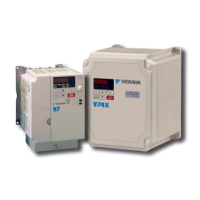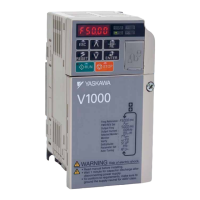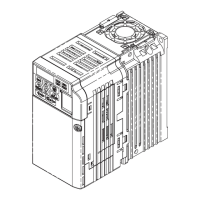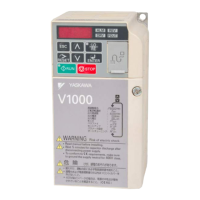6.3 Drive Alarms, Faults, and Errors
u
Types of Alarms, Faults, and Errors
Check the LED operator for information about possible faults if the drive or motor fails to operate. Refer to Using the
Digital LED Operator on page 78.
If problems occur that are not covered in this manual, contact the nearest Yaskawa representative with the following
information:
• Drive model
• Software version
• Date of purchase
• Description of the problem
Table 6.4 contains descriptions of
the various types of alarms, faults, and errors that may occur while operating the drive.
Contact Yaskawa in the event of drive failure.
Table 6.4 Types of Alarms, Faults, and Errors
Type Drive Responses to Alarms, Faults, and Errors
Faults
When the drive detects a fault:
• The digital operator displays text that indicates the specific fault and the ALM indicator LED remains lit until the fault
is reset.
• The fault interrupts drive output and the motor coasts to a stop.
• Depending on the setting, the drive and motor may stop via different methods than listed.
•
If a digital output is programmed for fault output (H2-oo = E), it will close if a fault occurs.
When the drive detects a fault, it will remain inoperable until that fault has been reset. Refer to Fault Reset Methods on
page 279.
Minor Faults and
Alarms
When the drive detects an alarm or a minor fault:
• The digital operator displays text that indicates the specific alarm or minor fault and the ALM indicator LED flashes.
• The motor does not stop.
•
One of the multi-function contact outputs
closes if set to be tripped by a minor fault (H2-oo = 10), but not by an alarm.
• The digital operator displays text indicating a specific alarm and ALM indicator LED flashes.
Remove the cause of an alarm or minor fault to automatically reset.
Operation Errors
When parameter settings conflict with one another or do not match hardware settings (such as with an option card), it
results in an operation error.
When the drive detects an operation error:
• The digital operator displays text that indicates the specific error.
• Multi-function contact outputs do not operate.
When the drive detects an operation error, it will not operate the motor until the error has been reset. Correct the settings
that caused the operation error to reset.
Tuning Errors
Tuning errors occur while performing Auto-Tuning.
When the drive detects a tuning error:
• The digital operator displays text indicating the specific error.
• Multi-function contact outputs do not operate.
• Motor coasts to stop.
• Remove the cause of the error and repeat the Auto-Tuning process.
u
Alarm and Error Displays
n
Faults
When the drive detects a fault, the ALM indicator LEDs remain lit without flashing. If the LEDs flash, the drive has
detected a minor fault or alarm. Refer to Minor Faults and Alarms on page 250 for more information. Conditions such
as overvoltage or external faults can trip both faults and minor faults, therefore it is important to note whether the LEDs
remain lit or if the LEDs flash.
Table 6.5 Fault Displays
LED Operator Display Name Pg.
bUS Option Communication Error 253
CE
MEMOBUS/Modbus
Communication Error
253
CF Control Fault 253
CoF Current Offset Fault 254
LED Operator Display Name Pg.
CPF02 A/D Conversion Error 254
CPF03 PWM Data Fault 254
CPF06
Drive Specification Mismatch
during Terminal Board or Control
Board Replacement
254
6.3 Drive Alarms, Faults, and Errors
YASKAWA ELECTRIC SIEP C710606 16C YASKAWA AC Drive – V1000 Technical Manual
249
6
Troubleshooting
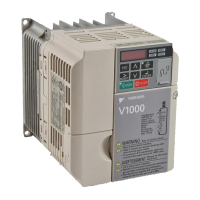
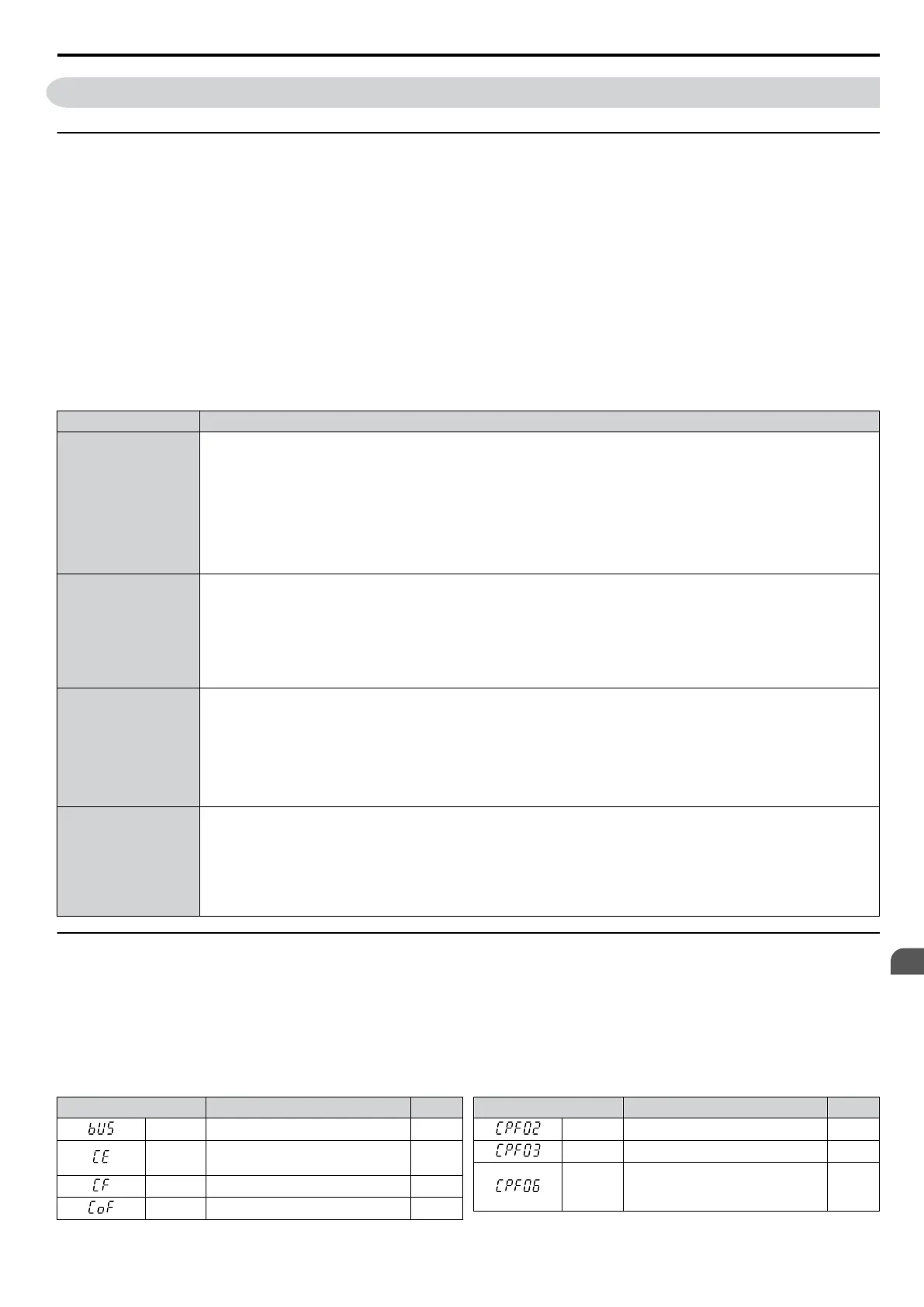